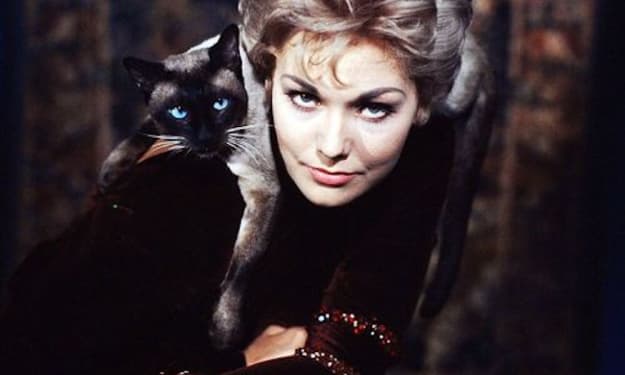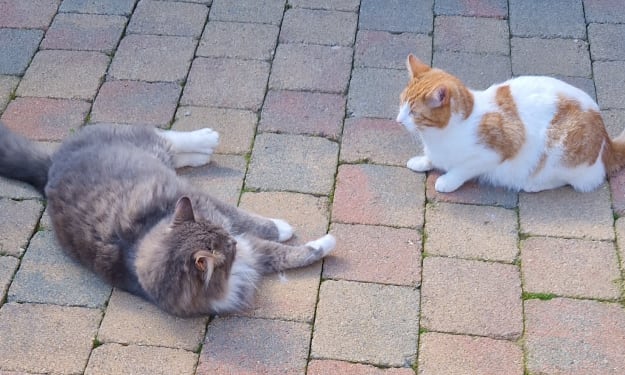The Benefits of Food Puzzles for Cats
The Benefits of Food Puzzles for Cats

We've all seen cats tossing a mouse or a mole about. The good news is that playing with their meals is beneficial to them in more ways than one.
Rodents, take it easy. Here, we're talking about Food Puzzles for Cats.
As far as I could tell, the purpose of food puzzles was to aid in the weight loss of your chubby felines. They had to work for their food, rather than merely stopping by the kibble bowl and nibbling whenever they felt like it. But there's a lot more to it.
A Mind in Good Shape
These puzzles, sometimes known as "foraging toys," are proving to be mentally stimulating for cats, according to research. Dr. Stephanie Globerman of Paws, Whiskers & Claws, the Feline Hospital of Marietta, Georgia, states, "These types of toys provide your indoor cat something to follow and hunt, giving them a much needed outlet for their prey drive and hunting instincts." “Most behaviourists agree that boredom, frustration, and stress are the root causes of many behaviour issues in cats.”
If there's one thing we've learned from cat behaviourist Carole Wilbourn's trailblazing work with felines since the 1970s, it's that they're not all that different from us. They, too, require challenges. According to Globerman, “a lack of mental stimulation can result in up to 30% loss of brain function in both animals and humans over time.”
Food puzzles were “originally intended to provide enrichment for caged zoo and laboratory animals,” according to a recent study published in the Journal of Feline Medicine and Surgery. They are usually made out of any device that can hold food and may be manipulated to release food when the animal interacts with it.”
The study looks at how food puzzles, such as play circuits (which can be changed into food puzzles by adding kibble or treats), and other interactive toys can help cats emotionally and psychologically. “Various forms of enrichment (such as play, perches, play towers, and novel toys) have been proven to lower indicators of stress in cats,” the scientists write.
The post includes two pages of examples of “food puzzles being used to help with a health or behavioural concern.” Several of the cases had obese cats who lost between 6.4 and 20 percent of their body weight in a year thanks to the puzzles; one medium-haired spayed female shed 30 percent of her body weight in 18 months.
Problems with Behavior
The majority of the cats in the study exhibited concerns with their behaviour. These included the following:
When their human was getting ready to leave or was simply out of sight, they experienced separation anxiety, pacing, and general agitation.
Outside the litter box, spraying and urine. Chronic feline idiopathic cystitis, often known as Pandora syndrome, was the cause of the latter.
In a multi-cat family, there are fights over food.
Fear-based aggressiveness directed at other feline companions.
Even the previously stated spayed female had problems that extended beyond her fat. She stayed in one room, didn't socialise much with her family, and despised some kittens who'd recently arrived.
For these cats, the food puzzles changed everything. Their troublesome behaviours either disappeared or considerably lessened.
And what about our medium-haired female companion? She spent more time with her caretakers and "got interested in the foraging toys" that the kittens were using. “She will now forage among the young cats,” she says. It's known as parallel play in human children.
Select a Puzzle
Food puzzles are divided into two categories:
Mazes and slow-feeder bowls are examples of stationary puzzles. Wet food can also be stored on boards with a variety of grooves and compartments.
Foraging cups, eggs, and treat balls are examples of "rolling" or mobile puzzles. All of these have holes in them where your cat can get treats or kibble.
Old shoeboxes, yoghurt containers, paper towel tubes, pill bottles, plastic water bottles, and egg cartons can all be used to build foraging toys. If your cat enjoys gnawing on cardboard or plastic containers, behaviourist Pam Johnson-Bennett advises against using them.
Not every cat is attracted to the same kind of food puzzle. For example, in the aforementioned study, a 7-year-old cat and a just-out-of-kittenhood person who loved to play rough were observed. The elder one preferred stationary food puzzles, whilst the younger one preferred rolling ones to burn off his surplus energy.
Despite having some hard hitters – Cheshire, Derv, and Thor, cover your ears — I've never tried food puzzles with my cats. I believe it is past time for me to make a change. After all, they're no longer only about dieting.
About the Creator
thecatcare
The market offers a huge variety of Protein cat foods. After researching the ins and outs of high protein cat foods and the top brands, we bring to our top picks. Have a look.
https://thecatcare.org/high-protein-cat-food/





Comments
There are no comments for this story
Be the first to respond and start the conversation.